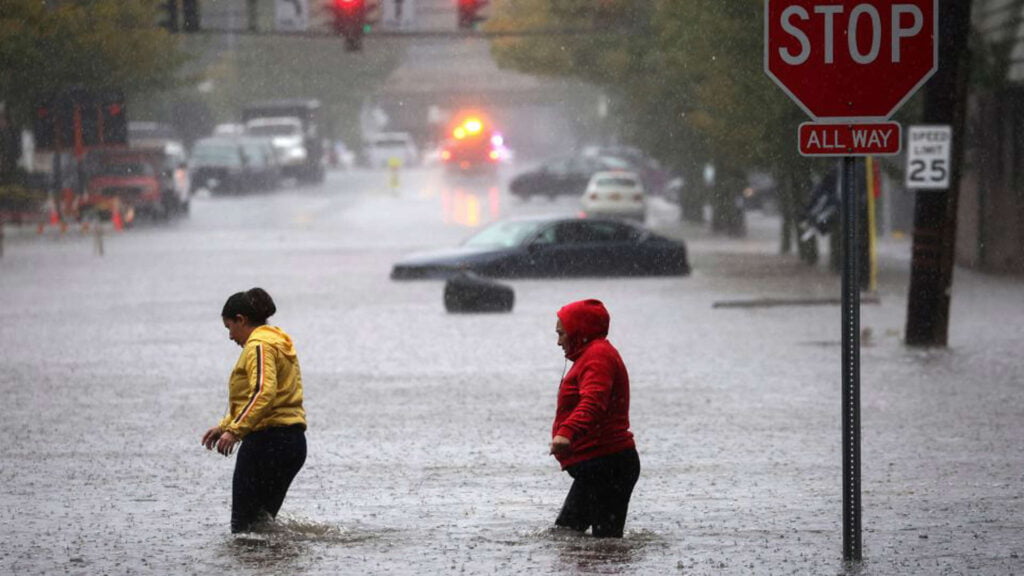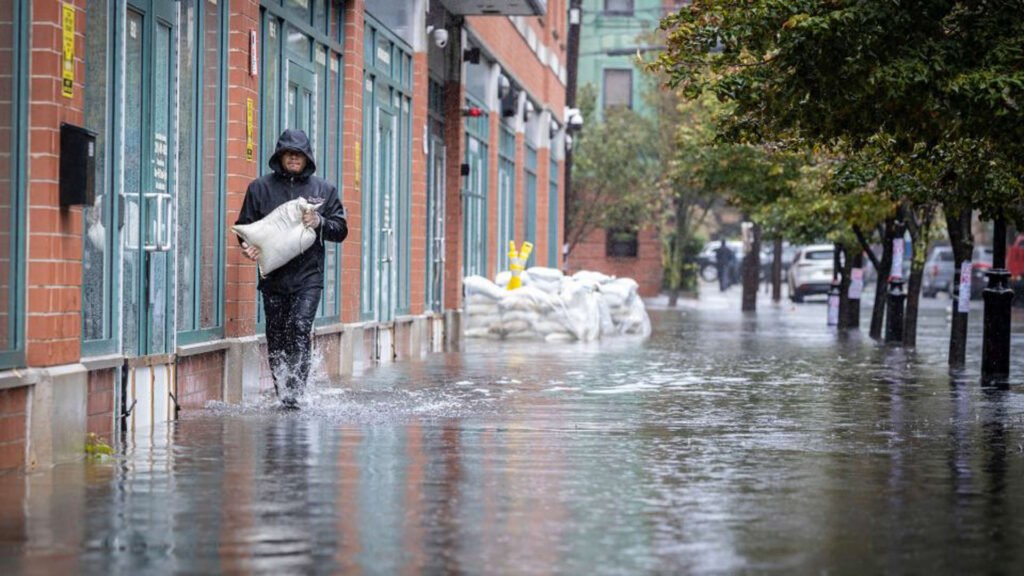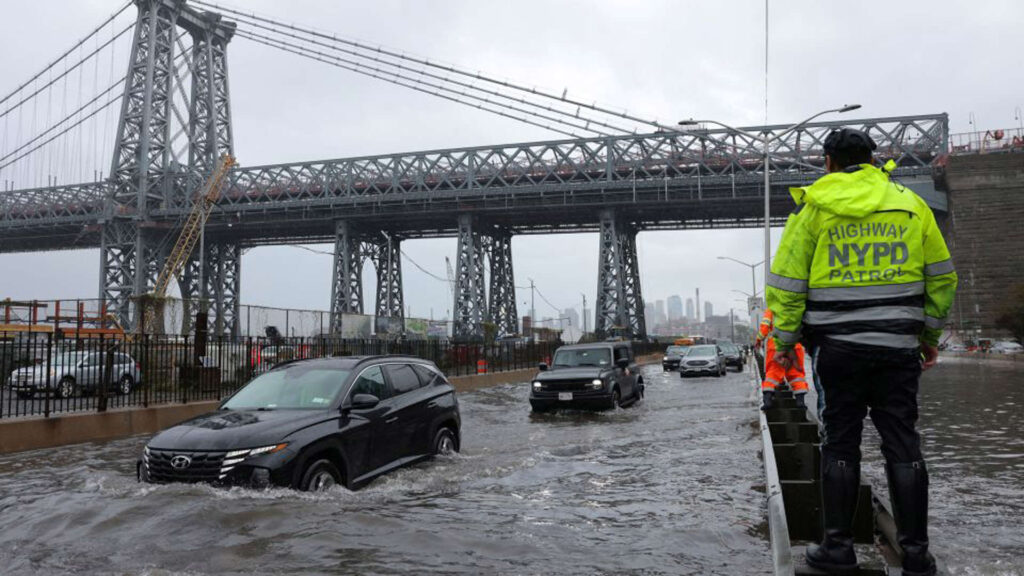New York City experienced an unprecedented deluge on Friday, overwhelming the city’s sewage system and resulting in widespread flooding. Streets turned into fast-flowing rivers, submerging basements, schools, subways, and vehicles, leaving commuters stranded and taken by surprise during the morning rush hour. Emergency responders swiftly sprang into action, rescuing people from stranded cars and homes as floodwaters surged.

John F. Kennedy International Airport in New York recorded nearly 8 inches of rainfall in a single day, a record not seen since 1948. In just three hours, Brooklyn received a month’s worth of rain, causing significant disruption during the Friday morning storm.

Climate scientists attribute these extreme weather events to climate change. A warmer atmosphere can hold more water vapor, leading to intense bursts of rainfall that can easily overwhelm outdated flood defenses. Rohit Aggarwala, Chief Climate Officer of New York City, underscored the urgent need for infrastructure improvements to keep pace with rapidly changing weather patterns.
By late Friday afternoon, a widespread 3 to 6 inches of rain had drenched New York City, prompting Governor Kathy Hochul to declare a state of emergency for the city, Long Island, and the Hudson Valley. She urged residents to stay home due to dangerous travel conditions, emphasizing the situation’s life-threatening nature. New Jersey Governor Phil Murphy also declared a state of emergency for his state.

Firefighters worked tirelessly to rescue individuals trapped in flooded basements throughout New York City. Approximately 150 of the city’s 1,400 schools were affected by flooding, although they remained open. In one Brooklyn school, an evacuation was necessary when floodwater caused the boiler to emit smoke. School officials assured the safety of students and continued to monitor the situation.
The flooding disrupted subway and railway services, resulting in significant disruptions. Ten train lines in Brooklyn and all three Metro-North train lines were temporarily suspended. Additional buses were deployed to help alleviate the impact of the train outages. While limited service resumed on Metro-North lines by Friday evening, the Metropolitan Transportation Authority fully restored service on seven subway lines.
Despite the challenges, New Yorkers displayed their resilience. Janno Lieber, MTA Chair and CEO, announced that one of the three Metro-North Railroad lines, the Hudson line, was operational again, and Long Island Railroad also had good service. Efforts were underway to restore limited service to the remaining two lines.
The adverse weather also affected air travel, causing delays at all three New York City area airports. Flooding forced the temporary closure of the historic Marine Air Terminal at LaGuardia Airport. Swollen rivers and creeks led to flood warnings in parts of Connecticut, New Jersey, and southern New York, including along the Bronx River.
While flood watches had expired for most of the region by late Friday, they remained in effect until Saturday morning in Suffolk County on Long Island in New York and parts of northwestern and southern Connecticut.






